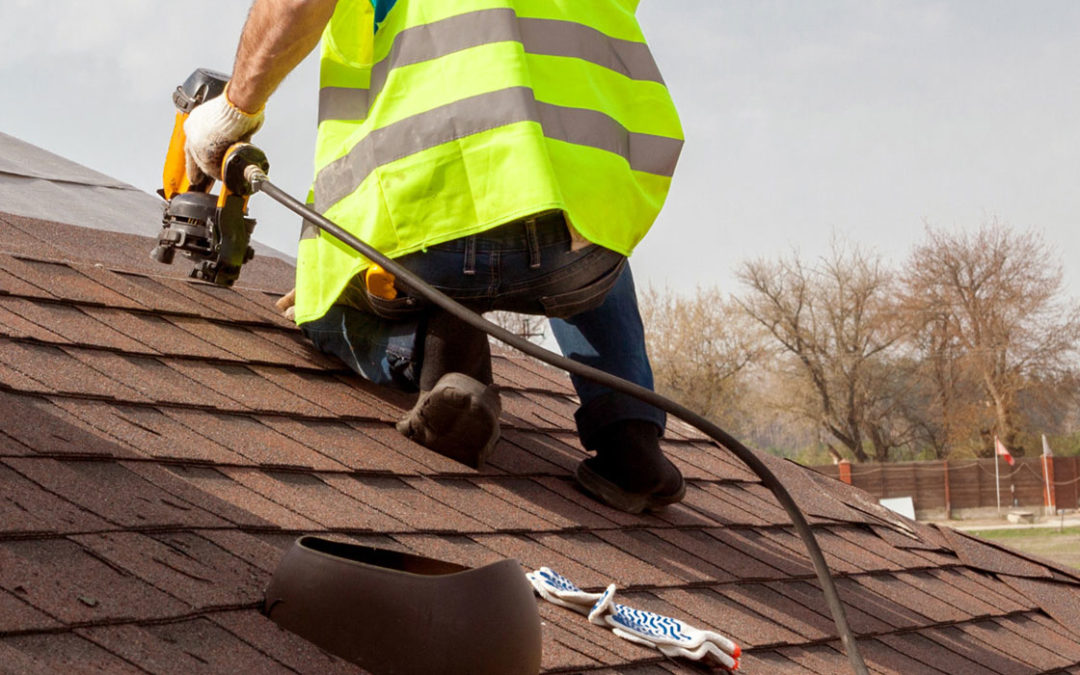Your roof is your home’s first line of defense against the elements, but over time, even the best roofs can experience wear and tear. While it may be tempting to handle roof repairs yourself, not all roof issues are suitable for DIY fixes. Knowing when you can safely repair your roof and when to call in a professional is crucial to ensuring your home stays protected without risking further damage or injury.
In this blog, we’ll cover common roof repairs that can be handled by a DIY enthusiast, along with the types of roof issues that should be left to the pros. This guide will help you maintain your roof effectively, keeping your home safe and secure.
1. Common DIY Roof Repairs
Some minor roof repairs can be tackled by homeowners with the right tools and a basic understanding of roofing materials. Here are a few issues that you may be able to fix yourself:
1. Replacing Missing or Damaged Shingles
Shingles can be damaged or dislodged by strong winds, hail, or general wear over time. Replacing a few missing or broken shingles is a relatively straightforward task.
How to Fix:
1. Use a pry bar to carefully lift the damaged shingle and remove the nails.
2. Slide the new shingle into place, ensuring it aligns with the existing shingles.
3. Nail the new shingle in place and apply roofing cement to secure the edges.
– Tools Needed: Pry bar, hammer, roofing nails, replacement shingles, roofing cement.
2. Fixing Small Roof Leaks
Leaks can cause significant damage to your home if left unattended, but if the leak is small and you can locate the source, you may be able to fix it yourself.
How to Fix:
1. Locate the source of the leak by inspecting the attic or roof for water stains.
2. Apply roofing sealant or caulk to cracks in the shingles or around flashing where the leak is coming from.
3. For small punctures, use a patch of roofing material and secure it with roofing cement.
Tools Needed: Roofing sealant, caulk gun, roofing cement, utility knife, replacement roofing material.
3. Cleaning and Repairing Gutters
Clogged or damaged gutters can lead to water backing up onto your roof, causing leaks or water damage. Keeping your gutters clean and in good repair is an essential part of roof maintenance.
How to Fix:
1. Remove debris such as leaves, twigs, and dirt from the gutters.
2. Check for any cracks or holes in the gutters and patch them with gutter sealant.
3. Ensure the gutters are properly sloped to allow water to flow freely toward the downspouts.
Tools Needed: Ladder, gloves, gutter scoop, gutter sealant.
4. Resealing Roof Flashing
Flashing is installed around roof penetrations, such as chimneys, vents, and skylights, to prevent water from seeping in. Over time, flashing can crack or deteriorate, leading to leaks.
How to Fix:
1. Inspect the flashing for signs of damage or cracks.
2. Apply roofing cement or caulk to seal small gaps or cracks in the flashing.
3. For severely damaged flashing, remove and replace the old flashing with new material.
Tools Needed: Roofing cement, caulk gun, pry bar, replacement flashing material, hammer.
5. Repairing Small Holes or Punctures
Small holes or punctures in your roof can occur due to falling branches, pests, or weather damage. These can be patched easily if caught early.
How to Fix:
1. Cut a patch of matching roofing material to cover the hole or puncture.
2. Apply roofing cement to the area around the hole.
3. Secure the patch over the hole, pressing down firmly to ensure it adheres.
Tools Needed: Roofing material patch, roofing cement, utility knife, gloves.
2. When to Call a Professional
While many small roof repairs can be handled with a DIY approach, some issues require the expertise of a professional roofer. Here’s when it’s best to leave the repair to the pros:
1. Large or Widespread Roof Leaks
If your roof has extensive water damage or leaks in multiple areas, it’s time to call a professional. Water can cause significant structural damage, and addressing widespread leaks requires specialized equipment and expertise.
Why Call a Pro: A professional roofer can accurately diagnose the root cause of the leaks and ensure that they are properly sealed, preventing further damage to your home’s structure.
2. Roof Sagging
Sagging roofs are a serious issue that indicates structural damage, often due to water buildup, rot, or compromised supports. Attempting to repair a sagging roof yourself can be dangerous and may not fix the underlying problem.
Why Call a Pro: A professional roofer can assess the structural integrity of your roof and recommend the best course of action to restore it safely.
3. Storm or Hail Damage
Severe storms, hail, or high winds can cause extensive damage to roofs, including broken shingles, punctures, and damaged flashing. In some cases, the damage may not be immediately visible, but it can lead to major issues over time.
Why Call a Pro: After a storm, it’s a good idea to have a professional roofer inspect your roof for hidden damage and make any necessary repairs.
4. Chimney and Skylight Leaks
Chimneys and skylights are common sources of leaks, but they require more specialized repairs due to the materials and angles involved. Improper sealing or flashing around these roof penetrations can cause ongoing problems.
Why Call a Pro: A professional can ensure that the flashing and seals around chimneys and skylights are correctly installed and watertight.
5. Roof Replacement
If your roof is nearing the end of its lifespan (typically 20–25 years for asphalt shingles), or if it has sustained significant damage, a full roof replacement may be necessary. Roof replacements are complex and labor-intensive projects that require professional expertise.
Why Call a Pro: A professional roofer has the knowledge, tools, and safety equipment needed to remove the old roof and install the new one correctly, ensuring long-lasting performance.
Roof Repair Safety Tips:
Whether you’re tackling a DIY roof repair or simply inspecting your roof, safety should always be your top priority. Follow these safety tips when working on your roof:
– Use the Right Equipment: Always use a sturdy, extendable ladder with stabilizers to prevent slipping. If you’re working on a steep roof, consider wearing a safety harness.
– Wear Protective Gear: Wear non-slip shoes with good traction and gloves to protect your hands from sharp materials.
– Avoid Working in Bad Weather: Never work on a roof when it’s wet, icy, or during high winds. Wait for dry, calm weather to ensure a stable, safe working environment.
– Watch for Electrical Hazards: Be mindful of power lines near your roof, and avoid touching or working near any electrical components.
Conclusion
DIY roof repairs can save you money and help you maintain your roof’s longevity, but it’s important to know your limits. For minor issues like replacing shingles, patching small leaks, or cleaning gutters, DIY fixes are often safe and effective. However, for larger or more complex problems—such as major leaks, structural issues, or storm damage—it’s always best to call in a professional roofer.
By understanding what repairs you can handle yourself and when to call a pro, you can keep your roof in top condition and protect your home from the elements. Regular inspections, proper maintenance, and timely repairs will ensure that your roof lasts for years to come.
Contact Us
Texas Coastal Roofing and Construction can help you maintain your roof’s excellent condition. We offer a variety of services. Call us today at (361) 332-1263to learn more. We serve the Corpus Christi coastal bay area including Portland, Rockport, Port Aransas, McAllen, North Padre Island, Kingsville, Mathis and more!


Recent Comments